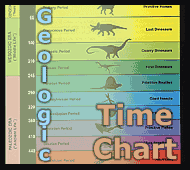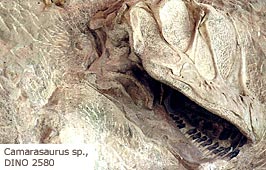




Relative dating tells us that unless some great upheaval has turned the rocks over, the layer on the bottom should be the oldest, and the one on top the youngest.
Absolute dating depends on our finding elements that decay radioactively into other elements at a known rate-uranium into lead, for example, or potassium into argon. By measuring and comparing the amounts of the original element and its decay product in a rock sample, a scientist may be able to calculate how long ago the rock formed.
The earth is now estimated to be between 4 and 5 billion years old.
Earth's history is told by its rocks, which are of three types; igneous, sedimentary, and metamorphic.
.
How can we make such an enormous span of time more understandable? Think of 5 billion years as if it were one calendar year. Start with the origin of the Earth on January 1. Through winter, spring, and most of summer, the Earth's crust is taking shape and its oceans and atmosphere are forming. It is a hostile and lifeless world.
The first microscopic forms of life might appear in July. More complex plants and animals do not become common until November 20. The first dinosaurs appear about December 15. By early morning on December 27, the last one has died. This leaves the stage clear for mammals to take the leading roles.
Our own species, Homo sapiens, only appears at 11:15 pm on December 31. Humans are the relative newcomers. Our recorded history only accounts for the last half-minute of the year!
